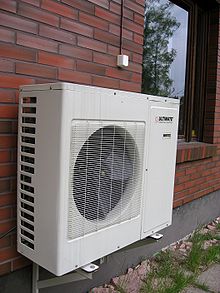This article contains promotional content. (October 2022) |

Negawatt power is investment to reduce electricity consumption rather than investing to increase supply capacity. In this way, investing in negawatts can be considered as an alternative to a new power station and the costs and environmental concerns can be compared.
Negawatt investment alternatives to reduce consumption by improving efficiency include:
- Improved thermal insulation and airtightness for buildings – low environmental impact
- Replacing older industrial plant – low environmental impact. Can have a positive impact due to reduced emissions.
Negawatt investment alternatives to reduce peak electrical load by time shifting demand include:
- Storage heaters – older systems had asbestos. Newer systems have low environmental impact.
- Demand response – control systems where the electricity board can control certain customer loads – minimal environmental impact
- Thermal storage – systems such as ice storage systems to make ice during the night and store it to use it for air conditioning during the day – minimal environmental impact
- Pumped storage hydroelectricity – can have a significant environmental impact – see Hydroelectricity
- Other Grid energy storage technologies – impact varies
Note that time shifting does not reduce total energy consumed or system efficiency; however, it can be used to avoid the need to build a new power station to cope with a peak load.
- ^ "Get back to using energy as efficiently as possible". Ontario Clean Air Alliance. Retrieved 2022-10-20.